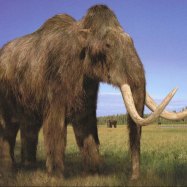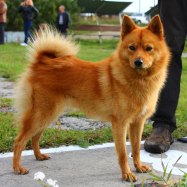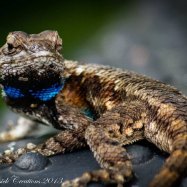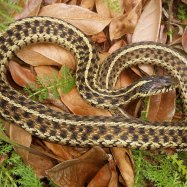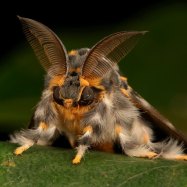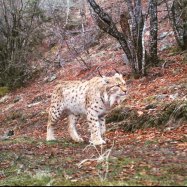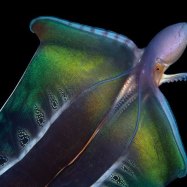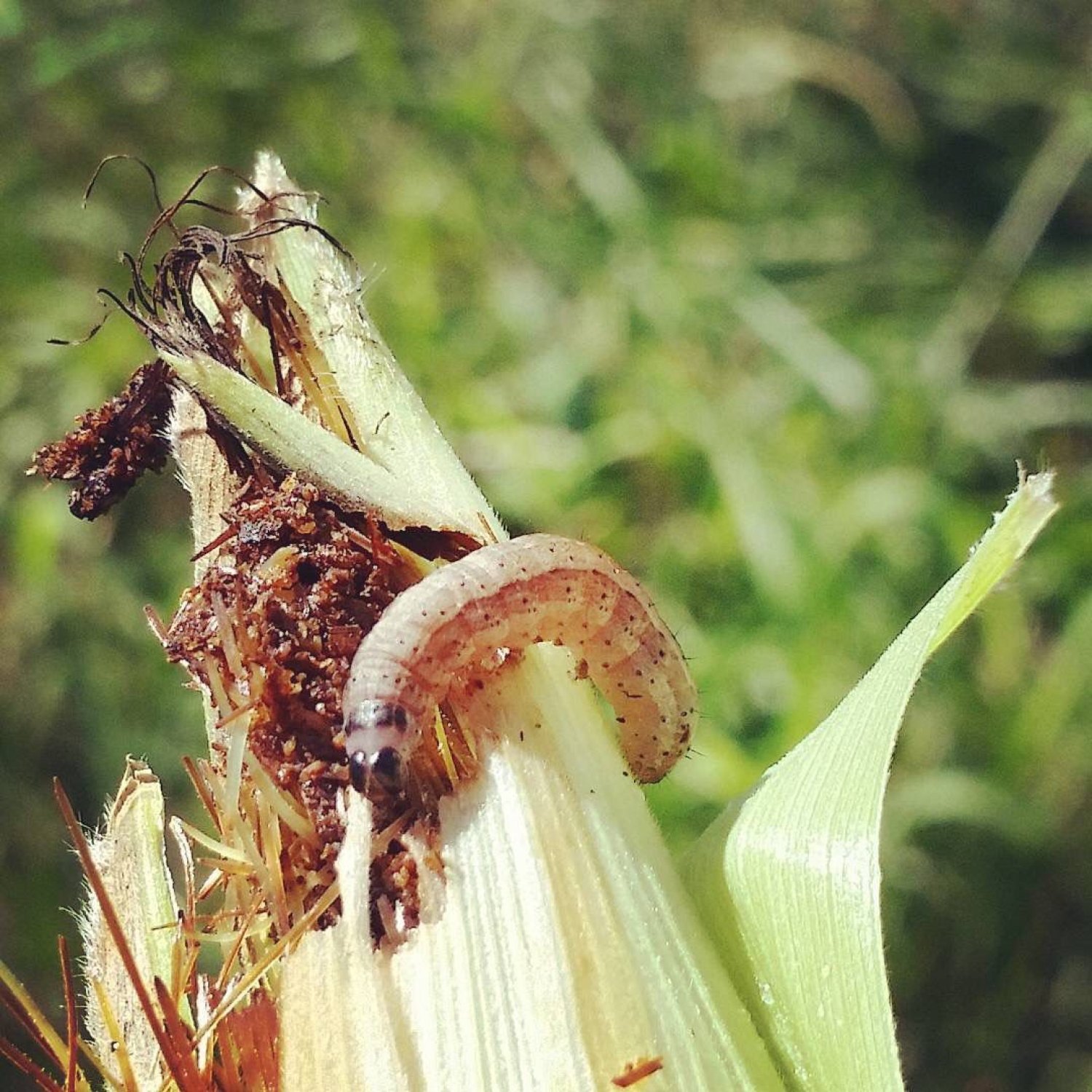
Corn Earworm
1.2 to 1.6 inches (3 to 4 cm)
The Corn Earworm, also known as the Helicoverpa zea, is a pest that causes damage to cornfields and other crops. With a length of 1.2 to 1.6 inches (3 to 4 cm), these cylindrical-shaped insects belong to the Noctuidae family. Farmers should keep an eye out for these pests to prevent crop damage. #CornEarworm #PestControl #CropDamage
Animal Details Summary:
Common Name: Corn Earworm
Kingdom: Animalia
Habitat: Agricultural fields, gardens, and orchards
The Corn Earworm: A Small Insect with a Big Impact
The world of insects is full of fascinating creatures, each with unique characteristics and behaviors. One such insect is the Corn Earworm, also known by its scientific name, Helicoverpa zea. Despite its small size, this insect has a significant impact on agriculture and the environment. In this article, we will dive into the world of the Corn Earworm, exploring its features, habitat, and role in our ecosystem Corn Earworm.Introduction to the Corn Earworm
The Corn Earworm is a member of the Animalia kingdom, the largest and most diverse kingdom in the world of living organisms. This small insect belongs to the phylum Arthropoda, which includes insects, spiders, and crustaceans. It falls under the class Insecta, known for their three-part body structure and six legs.The Corn Earworm is a part of the order Lepidoptera, which is the second largest order of insects and includes butterflies and moths. It is from the family Noctuidae, which is a large family of moths with over 1,400 species.
The Corn Earworm gets its name from its feeding habit of infesting corn ears, but it is also known to feed on various other crops such as tomatoes, cotton, and beans. This little insect is native to North and South America and is also found in Canada, Mexico, and the Caribbean.
Features of the Corn Earworm
The Corn Earworm has a variable coloration, ranging from green to brown, making it difficult to identify. Its body is cylindrical, and it measures between 1 Cactus Mouse.2 to 1.6 inches (3 to 4 cm) in length. It has a set of six legs, two antennae, and a pair of wings. The wings are narrow and have a wingspan of 0.8 to 1.2 inches (2 to 3 cm). The color and pattern of the wings also vary, but they are usually brown with a mottled or speckled appearance.One of the most distinctive features of the Corn Earworm is its sharp, rasping mouthparts, which it uses to pierce and feed on plants. These mouthparts also allow the insect to bore into the corn ears and feed on the kernels, causing significant damage to crops.
Habitat and Distribution
The Corn Earworm can be found in a variety of habitats, but it is most commonly found in agricultural fields, gardens, and orchards. These insects have a wide distribution, mainly being found in North and South America. Within the United States, they are primarily found in the southern and eastern states.The Corn Earworm is most abundant in cornfields, but it has also been reported in other crops such as soybeans, tomatoes, and peppers. It is a highly adaptable insect and can thrive in a range of environments, making it challenging to control.
Feeding Behavior
As mentioned earlier, the Corn Earworm is herbivorous and feeds on a variety of crops, including corn, cotton, and beans. As a young larva, it feeds on the corn silk and then bores into the ear to feed on the developing kernels. This feeding behavior can cause significant damage to corn crops, reducing their quality and yield.Apart from feeding on plants, the Corn Earworm also has a vital role in cross-pollination. When the insect moves from one plant to another, it transfers pollen, aiding in the reproduction of various plant species.
Economic Impact
The Corn Earworm may be small, but it has a significant impact on agriculture. These pests are responsible for millions of dollars in crop losses each year, making them a major concern for farmers. They not only damage crops by feeding on them, but they also create entry points for bacteria and fungi, which can cause further damage.In addition to the economic losses, the Corn Earworm also poses a threat to food security. With the world's population constantly growing, the demand for food is increasing, and any damage to crops can have severe consequences. Therefore, effective management and control of this insect are crucial to maintaining food production and security.
Controlling the Corn Earworm
Given the potential damage caused by the Corn Earworm, it is essential to have effective control measures in place. This can be challenging due to the insect's adaptability and resilience, but there are a few strategies that can help manage their population.One of the most common ways to control the Corn Earworm is through the use of insecticides. However, this method has its drawbacks, such as the risk of harming beneficial insects and the development of resistance in the insect population. As a result, many farmers are turning to more sustainable and environmentally-friendly methods, such as using natural predators and parasites to keep the Corn Earworm population in check.
Apart from these methods, there are also cultural and mechanical practices that can be implemented to control the Corn Earworm. Crop rotation, for example, can help reduce the insect's numbers by removing their preferred host plants. Handpicking or pruning infested plants can also help prevent the spread of the pest to other crops.
The Role of the Corn Earworm in the Ecosystem
Despite being considered a pest, the Corn Earworm plays a critical role in the ecosystem. As mentioned earlier, they play a vital role in cross-pollination, helping to maintain plant diversity. Additionally, they also serve as a food source for various predators such as birds, bats, and other insects. Therefore, while they may cause damage to crops, they also contribute to the delicate balance of the ecosystem.The Corn Earworm's Impact on Natural Language Processing
The study of the Corn Earworm and its impact on agriculture and the environment goes beyond the scope of biology. It also has implications in the field of Natural Language Processing (NLP). NLP involves the use of technology to analyze and understand human language, and the language used to discuss the Corn Earworm is no exception.Researchers in the field of NLP are using advanced techniques to study the relationship between the Corn Earworm and its impact on agriculture. This includes analyzing texts and reports related to the insect to better understand its behavior and develop effective control measures.
Conclusion
In conclusion, the Corn Earworm, with its small size and unassuming appearance, has a significant impact on our world. From its role in pollination to its notorious reputation as a crop pest, this insect plays a crucial role in the ecosystem. While it may pose challenges for farmers, its impact on food security and the environment cannot be ignored. Through better understanding and management, we can minimize the harm caused by the Corn Earworm and appreciate its role in our ecosystem.

Corn Earworm
Animal Details Corn Earworm - Scientific Name: Helicoverpa zea
- Category: Animals C
- Scientific Name: Helicoverpa zea
- Common Name: Corn Earworm
- Kingdom: Animalia
- Phylum: Arthropoda
- Class: Insecta
- Order: Lepidoptera
- Family: Noctuidae
- Habitat: Agricultural fields, gardens, and orchards
- Feeding Method: Herbivorous
- Geographical Distribution: North and South America
- Country of Origin: United States of America
- Location: Cornfields and other crops
- Animal Coloration: Variable, ranging from green to brown
- Body Shape: Cylindrical
- Length: 1.2 to 1.6 inches (3 to 4 cm)
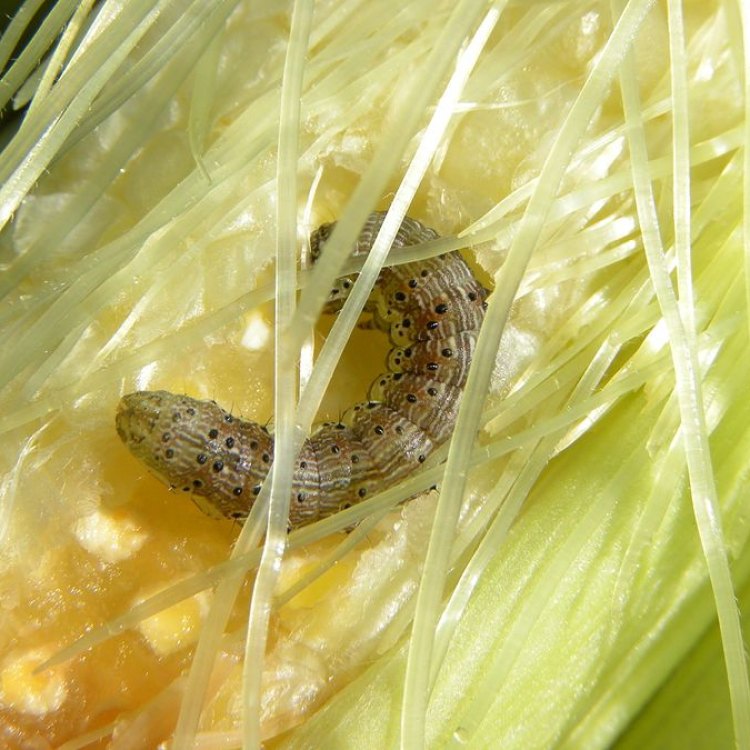
Corn Earworm
- Adult Size: Small to medium-sized
- Average Lifespan: 2 to 4 weeks
- Reproduction: Sexual
- Reproductive Behavior: Mating occurs at night
- Sound or Call: No specific sound or call
- Migration Pattern: Migratory in some regions
- Social Groups: Solitary
- Behavior: Nocturnal
- Threats: Pesticides, natural predators
- Conservation Status: Not evaluated
- Impact on Ecosystem: Crop damage
- Human Use: Considered a major agricultural pest
- Distinctive Features: Caterpillar has distinct stripes and spines
- Interesting Facts: Can cause significant damage to corn and other crops
- Predator: Birds, bats, and other insect-eating animals
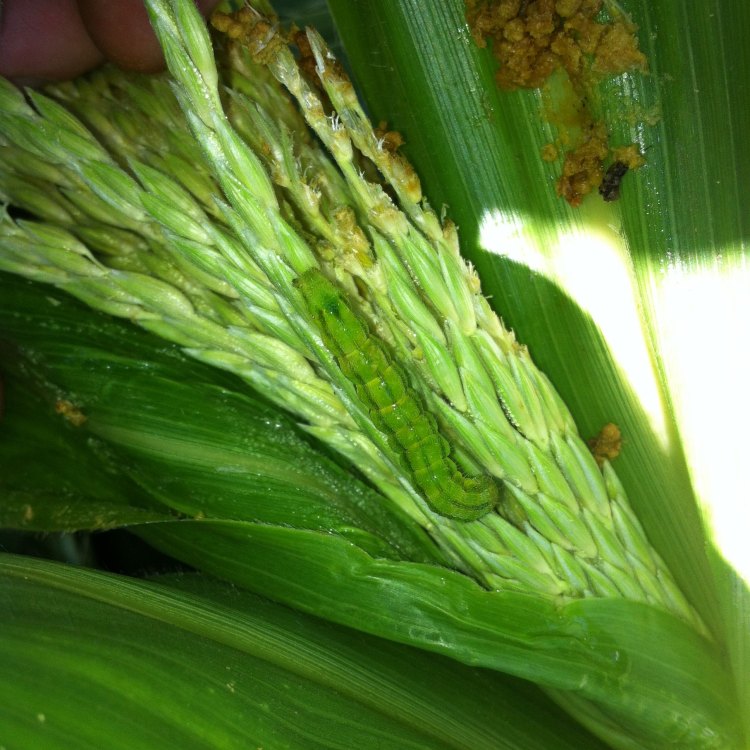
Helicoverpa zea
The Corn Earworm: An Agricultural Pest with a Stripy Attitude
As you stroll through a lush cornfield on a warm summer evening, you may hear rustling in the corn stalks and see small, green caterpillars munching on the leaves of the plants. These are the infamous corn earworms, tiny yet destructive creatures that have a significant impact on agricultural crops.The corn earworm, also known as the cotton bollworm or tomato fruitworm, is a small to medium-sized moth that can be found in North and South America. Despite its name, this pest does not exclusively feed on corn PeaceOfAnimals.Com. In fact, it is known to attack over 100 different types of plants, including tomatoes, beans, cotton, and other crops.
Let's take a closer look at this fascinating yet troublesome insect and learn more about its unique features, behavior, and impact on our ecosystem.
A Small but Mighty Pest
The adult corn earworm may only measure about half an inch in length, but don't let its size deceive you. It is a major agricultural pest that can cause significant damage to crops.The adult moth has a wingspan of about 1.5 inches and is usually light brown in color with dark spots and bands on its wings. Its body is covered in tiny hairs, giving it a fuzzy appearance. The moths are sexually dimorphic, with females being larger and having a more rounded abdomen compared to the males.
A Brief Adult Lifespan
The average lifespan of a corn earworm is only 2 to 4 weeks Cockle. During this short period, the moths are solely focused on reproducing and lay up to 500 eggs each. These eggs are tiny, about 1 mm in diameter, and are laid on the leaves of plants.Once the eggs hatch, the caterpillars emerge, and that's when the real damage begins.
A Nighttime Mating Ritual
Corn earworms are nocturnal creatures, which means they are most active at night. This also applies to their mating behavior. The moths are solitary and do not form social groups. Instead, they seek out their mates by releasing pheromones, which are scents that attract other individuals of the same species.The mating process can occur in the air or on the surface of leaves, and it typically takes place during the night. Once the female has mated, she will lay her eggs and continue the cycle.
No Room for Sound
Unlike some other insects, corn earworms do not have any specific sound or call. They communicate with each other through their pheromones and reproductive behavior. However, they do make small clicking noises as they move through plants, which can alert predators to their presence.A Migratory Species
In some regions, corn earworms are considered to be migratory. This means that they move from one location to another in search of suitable food sources and breeding grounds. These migrations may occur seasonally or as a response to environmental conditions such as temperature or plant availability.This behavior poses a challenge for farmers, as these moths can travel long distances and infest crops in different areas.
A Deadly Threat to Crops
The most significant impact of corn earworms is their damage to agricultural crops. These pests can cause significant economic losses for farmers by reducing crop yields and quality.They primarily feed on the reproductive structures of plants, such as corn silk, which is essential for pollination. By consuming the silk, the caterpillars can prevent the corn from being pollinated, resulting in malformed or underdeveloped ears.
Moreover, the caterpillars continue to feed on corn kernels, beans, and other crop parts, causing extensive damage and reducing the harvest.
A Natural Prey for Predators
Corn earworms are not invincible, and they have many natural enemies in their ecosystem. Birds, bats, and other insect-eating animals, such as spiders, are known to prey on the larvae and adult moths.Furthermore, some species of wasps and flies lay their eggs inside the caterpillars, which then hatch and feed on the pest from the inside out. These natural predators play a crucial role in regulating corn earworm populations and preventing them from becoming too destructive.
Threatened by Pesticides
Despite being a major pest, corn earworms also face threats from human activities. The use of pesticides to control these insects has become a common practice in agriculture. However, this can have adverse effects on the environment and other organisms that play a vital role in our ecosystem.Moreover, overuse of pesticides has led to some corn earworm populations developing resistance, making it even harder to control them.
Potential for Conservation
Surprisingly, corn earworms are not considered a conservation concern. They are widespread and have a high reproductive potential, making it challenging to manage or eradicate them entirely. However, it is essential to find sustainable and environmentally-friendly solutions for controlling these pests, as they can have a significant impact on our food supply.The Stripy Caterpillar
The most distinctive feature of the corn earworm is its caterpillar form. These larvae have a unique appearance, with a distinct pattern of yellow and black stripes along their bodies and long spines on their backs. These spines are not poisonous, but they can cause irritation or allergic reactions if touched.The caterpillars also have a brown head and can grow up to 1.5 inches in length. They are voracious eaters and can consume large amounts of plant material in a short time, making them a threat to crops.
Interesting Facts about Corn Earworms
Here are some fascinating facts about corn earworms that you may not know:- Despite their name, corn earworms are not true worms. They are actually caterpillars of the corn earworm moth.
- These pests are also known to attack ornamental plants, such as petunias and geraniums.
- Corn earworms are not native to North America. They were introduced from Europe in the 1800s and have since spread to other parts of the continent.
- Some people believe that if you find a corn earworm in your corn, it's a sign of good luck.
- These pests have been used in scientific studies to understand the genetic basis for pesticide resistance.
In Conclusion
Corn earworms may be small, but they are mighty pests that pose a significant threat to our food supply. Their distinctive appearance, behavior, and impact on our ecosystem make them a fascinating yet troublesome species.While pesticides are often used to control these insects, it is crucial to find sustainable and environmentally-friendly methods to manage their populations. These efforts will not only help farmers but also conserve the delicate balance of our ecosystem.
So the next time you see a tiny, stripy caterpillar in your cornfield, remember the significant impact it can have and appreciate the intricate workings of nature.
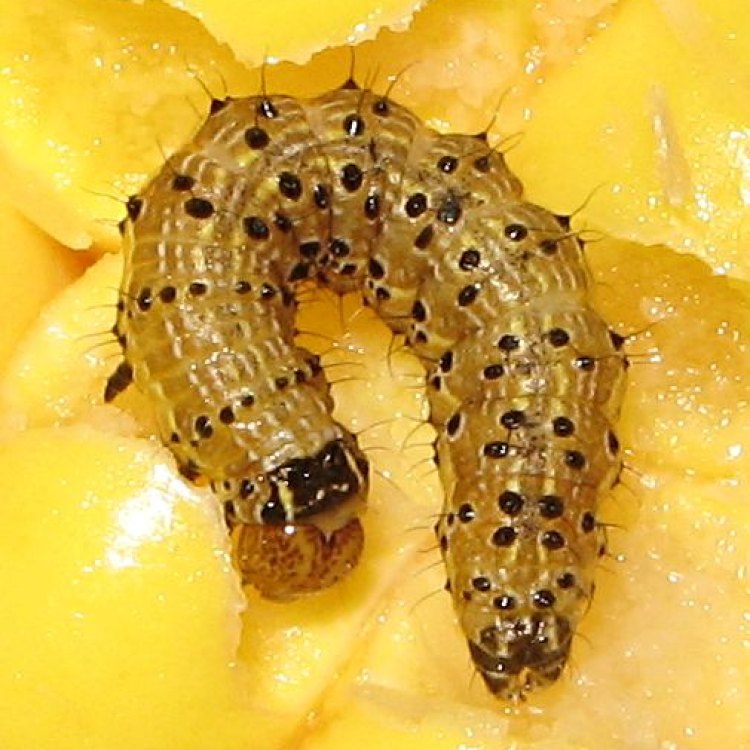
The Corn Earworm: A Small Insect with a Big Impact
Disclaimer: The content provided is for informational purposes only. We cannot guarantee the accuracy of the information on this page 100%. All information provided here may change without prior notice.

